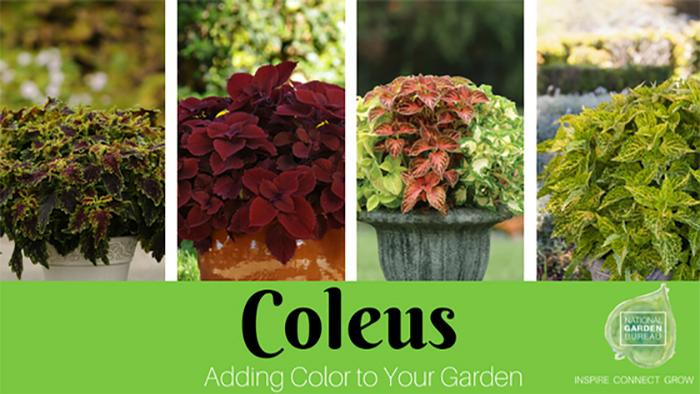Not To Flower or To Flower?
Since Coleus plants are primarily used for their foliage, it is recommended they are pinched back every few weeks to prevent flower formation. This directs the plant’s energy into additional branching and foliage creation instead of flowering, thereby creating a fuller plant. Coleus left to flower may lose vigor as the plant puts energy into seed production. When pinching off flowers, do so throughout the entire summer to create a full, lush plant. Pinch just above a set of leaves or branching junction for the best appearance (don’t leave a stub!).
But wait, bees love Coleus Flowers! “Blooming coleus may be thought of as unsightly, but not to a bee. A member of the mint family, these small blooms are very attractive to bees,” mentions Michigan State Extension in a recent post titled Gardening for pollinators: Smart plants to support pollinators. Many newer varieties do not start flowering until later in the season, so removing the flowers becomes less of an issue. Pinching and trimming the foliage is still recommended to keep the desired form.
Overwintering Your Coleus Plant:
Overwintering coleus plants as houseplants is an option when the weather turns colder. Although if your outdoor temperatures stay near 70 degrees F your coleus will love it. Rotate plants and pinch back as needed to maintain form. Consider grow lights to provide adequate winter lighting conditions if needed.
Designing With Coleus
Solid color varieties such as Redhead and Lime Delight Premium Sun (both bred for the sun) can be very impactful and make a statement in the mixed border while those with variable coloration may become “color echoes” for neighboring plants with similar or contrasting flower and/or foliage colors. The repetition of coleus colors and form can lend unity and harmony in the garden. Also, consider the impact of mass plantings. Foliage with lighter coloration can provide illumination in shadier locations while dark colors (for example, any coleus with Chocolate its name) in the same setting will create depth and contrast. Consider coleus just one of many available tools in your gardening “toolbox.”
Coleus in Containers
All coleus have excellent container potential if given an adequate volume of well-draining soil mix, sufficient drainage holes, reasonable nutrients and the proper sun exposure. Avoid windy locations as coleus can be prone to breakage in extreme winds. Slow release fertilizers with a balanced mix of nutrients are recommended for your containers although half-strength liquid fertilizer applied every 2 weeks over the growing season should be sufficient. Coleus do not show their best coloration if over fertilized so be conservative. You may want to consider water retention additives to help alleviate some watering needs, particularly in sunny locations. Container size is a factor as the volume of soil should accommodate substantial rooting by coleus and any other plants that are involved in the design.

